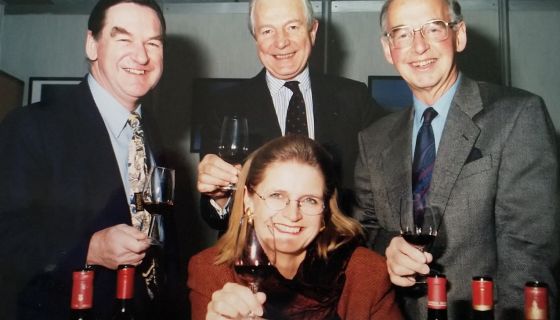13 December 2001 Another day, another trip to Paris, this time to discuss next September's publication of the 5th edition of L'Atlas Mondial du Vin with publishers Flammarion. From the sound, but not thrilling, list at the Bistrot du Sommelier run by Philippe Faure-Brac (Meilleur Sommelier du Monde 1992) I chose a lowly Bourgogne Blanc 1994 made by old favourite Coche-Dury, whose wines (with Lafon's) are fast joining those of DRC and Leroy in terms of the prices they fetch. This bottle, incidentally, was 450 francs on the list, which presumably means he paid no more than 100 francs (10 pounds or 15 dollars) for it originally.
One would not normally reckon that a basic Chardonnay would taste much good at seven years old, but of course Jean-François Coche is a bit of a grand master, and anyway, white burgundy ages so, so much slower than Chardonnays made virtually anywhere else. This Bourgogne 1994 had lost its youthful acidity but was still a powerful, savoury, fine and genuinely interesting wine.
This paean of praise was inspired by another recent experience: tasting a range of 55 Californian white wines, mainly Chardonnays, for British Airways business class. Of course for such a big airline, the quantities needed are in thousands of cases, which means that only the larger producers tend to feature in these blind tastings. But the experience was deeply depressing.
So many of the wines were so short on character they were almost watery, and those that weren't watery tended to be oily or completely lacking fruit simply because they were already too old. And if I tell you that all but eight of the wines came from the current, 2000 vintage, this is extremely worrying. Perhaps it's partly because such a high proportion of vines in California are so extremely young, or perhaps it's because the market there isn't competitive enough. Or perhaps we were being given what Americans wouldn't drink. I dunno, but I can tell you that the 1999 Chardonnays (Villa Mount Eden Monterey, Buena Vista, Lockwood Monterey, Beringer Founders Estate and Concannon Central Coast) and the 1998s (Napa Ridge North Coast and Buena Vista Carneros) were shamefully over the hill. One wonders why anyone bothered to submit them for a tasting likely to be attended by two Masters of Wine (myself and Michael Broadbent) and Hugh Johnson – although presumably it is not the wineries but their respective airline sales agents that are to blame for such a waste of time.
We did manage to find a couple of decent wines – Bonterra Mendocino County 2000 (an organic wine from Fetzer) and Geyser Peak Sonoma County 2000 (whose chief winemaking influences have been Australian) but.... I'd say the average mark for this tasting was lower than for any other I can remember. We tend to mark A for good, B for acceptable and C for faulty with all sorts of variations on pluses, minuses and question marks in between. I gave four Cs (most unusual), four B minuses (ditto) and there wasn't an A in any form. Is it really so difficult to make interesting Chardonnay in California?
Also, see my wine of the week for 23 October 2001 on Kistler.













